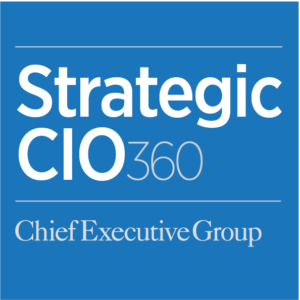Technology industry spending has declined in the past six to eight months, with buyers opting to decelerate spending on new tech software. When this pattern first began, experts weren’t sure whether it would be short-lived or a more prolonged trend—but now that we’re in Q3, we can clearly see that it’s the latter. How did we get here and what does it mean?
During the pandemic, technology boomed as organizations across industries and around the world embarked on digital transformation journeys to up-level their tech and unite distributed workforces. Due to such incredible customer demand, tech businesses engaged in hiring sprees and embraced a philosophy of “growth at all costs.” The tech wave was also bolstered by low interest rates, which made investing easier than ever. This resulted in bloated sales and marketing spend that could only be supported by hyper top-line growth.
Once the pandemic began to recede, tech businesses came to realize they were overstaffed. Meanwhile, investors began pushing businesses to right-size to emphasize profitability and align resources to a lower growth trajectory.
This brings us back to the present. Tech firms have laid off hundreds of thousands of employees this year and are laser-focused on doing more with less. To get back on the profitability track, tech organizations must reassess three key areas of their business: people, processes and technology.
People
Tech organizations are no strangers to adjusting their workforces, and they may need to continue doing so if they want to embrace profitable growth. During the hyper growth seen amid the height of the pandemic, some tech firms neglected to focus on operational capabilities. We also saw quite a bit of M&A activity among tech firms, which resulted in a patchwork of various management philosophies and coverage models as disparate firms joined together. In order to retain key talent and meet their profitability goals, leaders must ensure the right people are in the right place. Teams appreciate clarity on their job remit and how they should be collaborating with others.
By performing a job architecture and competencies assessment, tech organizations can realign career pathways and boost overall efficiency of their workforce. These assessments require a detailed audit of the organizational structure to ensure role hierarchies are logical, job duties are appropriate and core competencies are aligned. These assessments help boost efficiency in a few ways: first, they ensure a company isn’t over- or under-indexed in a particular role; second, they create clear career pathways that meet newer employees’ expectations and help support retention. Beyond any adjustments that are made at the conclusion of the assessment, the mere act of completing it signals to employees that leaders are invested in their role and future at the company.
Sales teams should receive unique attention during organizations’ efforts to realign toward profitability. There are several tactics businesses can employ to increase efficiency and ensure proper role alignment. In a sales compensation assessment, leaders take a deep dive into their organization’s compensation practices. How are their teams being compensated compared to the general market? By addressing questions like this, tech leaders could discover ways to help re-focus their profitability efforts. For example, they might discover instances where excessive commission doesn’t correlate with a commensurate degree of performance, or where their compensation plans aren’t driving the top-line that they need to be. Sales compensation assessments are crucial if tech leaders want to keep their sales teams happy and productive—especially since it can take up to a year to get new sales talent up to speed.
Tech leaders can also reexamine their sales territory assignments to ensure they align with today’s realities. Maybe, given the prevalence of remote work, regional territories are no longer the best fit for a given organization. Perhaps sales reps would be more productive if their territories were divided by business vertical rather than time zone. There is no one “right” way to assign sales territories, so tech organizations must take the time to find the best method for their unique business and customer needs. In doing so, they’ll ensure their sales teams connect with the right prospects at the right time.
When it comes to their workforces, tech businesses have plenty of options to boost efficiency and recalibrate their compasses to the true north of profitability.
Processes
If tech businesses aim to better balance profitability with growth, they must also consider overhauling their go-to-market models and investments. Focusing on sales efficiency (e.g., auto-generating quotes and eliminating unnecessary touchpoints to increase deal velocity) is imperative to help meet new organizational goals.
During periods of right-sizing, many businesses’ first move is (understandably) to reduce their workforce. However, just because you reduce an overcrowded workforce doesn’t mean you automatically have more efficient processes.
If customer acquisition costs are unsustainably high, tech firms could consider adopting product-led growth (e.g., freemium pricing) to rebalance. If expansion motions are inefficient, teams must capture greater usage insights and conduct better account targeting through machine learning to identify accounts that are ripe for cross- or up-sell. To realign renewals, consider optimizing the customer experience from onboarding and beyond to ensure customers get full value realization. As tech businesses look to 2H23 planning, there is plenty to be done in terms of driving more efficiency and streamlining processes.
Technology
To boost profitability, tech businesses must also ensure they practice what they preach by adopting advanced technology within their organizations. Today’s tech solutions are often designed specifically to make work easier and more seamless. With an integrated tech stack and more powerful, intelligent tools like artificial intelligence, businesses can ensure they’re setting teams up for success with the most efficient technology on the market.
Emerging solutions like generative AI must be incorporated into business processes. Organizations must take the time to research how new technologies could impact their businesses and their own offerings—and how they might be able to use this new technology to their advantage to meet profitability goals. Generative AI is a force-multiplier for the teams who use it, helping them make better decisions and process data more efficiently. Lead Gen reps can use ChatGPT to accelerate the pace of their customized prospect outreach. By choosing to invest in an internal generative AI platform, tech leaders can save their teams countless hours of performing tasks that are easily automated or replicated. In delegating those responsibilities to generative AI, teams can spend more of their valuable time on activities that generate profit.
By focusing on their people, processes and technology, technology firms can make great progress toward their profitability goals. When workforces are better aligned and fairly compensated, they can perform their duties more efficiently and productively. Performing a deep dive into internal processes can help business leaders identify and address unnecessary and costly roadblocks. Implementing advanced technology can help entire organizations work more smoothly and efficiently. These three areas are key for any successful business during any economic condition, but especially during a push for profitability.









